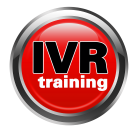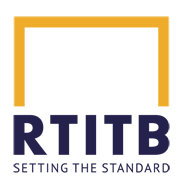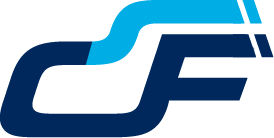
🛠 Core Modules (VR1, VR2, VR3) Health & Safety, Customer Service, and Roadside Awareness (2 days) ⏳ 14 CPC Hours available
VR1 provides students with an overview of health and safety requirements as it affects them in their job role in the recovery industry. It provides students with the knowledge required to comply with legislation and to ensure that they are able to keep themselves and others safe. Learning Outcomes: Health and safety as it affects working at the roadside and in vehicle recovery. Personal protective equipment and its use. Responsibilities of an individual with regards to accident prevention in the workplace. Fire prevention, evacuation and fire procedures. Good housekeeping procedures within the workplace. Equipment, cleaning solutions and their storage requirements. Importance of using company resources economically. Hazards and risks relating to work equipment and resources.
VR2 provides students with an overview of customer service requirements as it affects them in their job role in the recovery industry. It is also about maintaining effective working relationships with colleagues and the wider public. Learning Outcomes. How to build and maintain effective working relationships. Different forms of communication used within the recovery industry. Identification of different types of customers and their needs. Identification of potentially dissatisfied customers and how to deal with the situation. How to create a positive impression of yourself and your organisation. Demonstrate through role playing the skills learned
VR3 provides the attendee with the basic skills to risk assess the roadside situations he/she is likely to encounter in their job role. It covers the use of dynamic risk assessment to ensure that an ever-changing environment is assessed and dealt with in the appropriate manner, ensuring the safety of the recovery operator, casualty passengers and the general public. Learning Outcomes: Roles and responsibilities with regards to safety at the roadside. How to approach and park at the scene. How to carry out a risk assessment at the scene in order to repair, recover and remove the vehicle safely. The procedure prior to leaving the scene. Vehicle driver and passenger management and welfare. Demonstrate through role playing the skills learned
🛠 Ancillary Equipment Course (VR4) Essential equipment used in vehicle recovery (1 day)
VR4 covers using different types of ancillary equipment such as tow pole, rapid deployment towing equipment, ‘A’ frames, tow dollies or motorcycle retriever when carrying out routine removal procedures on cars, car derived vans and light commercial vehicles up to 3500kg GVM. In most cases each VR04 course will concentrate on one type of equipment or may be attached to the other light recovery modules. Learning Outcomes: Health and Safety requirements applicable to the use of light vehicle ancillary recovery equipment. Understanding the means by which casualty vehicles may be removed and the equipment used. The operating procedure for towing using a tow rope, strap or straight bar. The operating procedure for rapid deployment recovery equipment and/or motorcycle retriever recovery equipment and/or ‘A’ frame towing equipment and/or tow dolly recovery equipment. Terminology used – flat tow, suspend tow, A frame. Operating procedures and customer service. Legislation requirements for towing. Practical Outcome. The student will be able to demonstrate the correct use and deployment of the equipment used during training.
🛠 Underlifts/Transporters Combined Course (VR5/6) Comprehensive training on underlifts and transporters (2 days) ⏳ 7 CPC Hours available
VR05 covers using underlift recovery units (spec frames) when carrying out routine removal procedures on cars, car derived vans and light commercial vehicles up to 3500kg GVM. This module also covers the safety requirements associated with the use of underlift recovery units. Learning Outcomes: Health and safety requirements applicable to underlift recovery units. Variations and performance features of underlift recovery units. Equipment and vehicle checks required with underlift recovery units. Purpose and function of booms, cross heads and fittings. Calculating winch power required using resistance calculations. Loading and unloading procedure of a light underlift recovery unit. Towing procedures and potential hazards when using an underlift. Practical Outcome. The student will be able to demonstrate the preparation, loading and unloading and securing of a vehicle using a front suspend tow. They are also required to manoeuvre the recovery vehicle and casualty as directed by the instructor/assessor as well as demonstrating good general health and safety throughout.
VR06 covers using light transporter recovery units when carrying out routine removal procedures on cars, car derived vans and light commercial vehicles up to 3500kg GVM. This module also covers the safety requirements associated with the use of light transporter recovery units. Learning Outcomes: Health and safety requirements applicable to transporter recovery units. Variations and performance features of transporter recovery units. Equipment and vehicle checks required with transporter recovery units. Calculating winch power required using resistance calculations. Loading and unloading procedure of; a fixed bed light transporter recovery unit /a slidebed light transporter recovery unit (including SLA units)/a multi deck light transporter recovery unit. Transporting procedure and potential hazards. Practical Outcome. The student will be able to demonstrate the preparation, loading and unloading and securing of a casualty vehicle using a transporter. Students are also required to manoeuvre the recovery vehicle and casualty as directed by the instructor/assessor, as well as demonstrating good general health and safety throughout.
🛠 Hybrid & Electric Vehicle Awareness (VR27b) (1 day)⏳ 7 CPC Hours available
VR27b covers the vehicle recovery technician’s considerations when handling, recovering, transporting and storing these types of vehicle and is suitable for all vehicle recovery technicians. It can also be bespoke by the IVR to suit other industries. Key Learning Outcomes: Health and safety requirements applicable to electric and hybrid vehicles. Differences between internal combustion and high voltage vehicles. The principles of hybrid and electric vehicle operation. The potential hazards with high voltage vehicles. Understand realistic vehicle recovery operator issues, including storage. Practical Learning Outcome. Explain a low voltage disconnect and low voltage boost start, thermal checking and recording. Understand how to safely load/unload, secure and the stability of an alternatively powered vehicle on a recovery transporter, using suitable ancillary equipment.
🛠 Lorry Loader Cranes in Vehicle Recovery (VR17) (2 days) ⏳ 14 CPC Hours available
VR17 is about using lorry loader recovery units when carrying out routine removal procedures from road traffic collisions, parking and other situations, on cars, car derived vans and light commercial vehicles up to 3500kg GVM. This module also covers the safety requirements associated with the use of lorry loader recovery units. Learning Outcomes: Health and safety requirements applicable to the use of lorry loaders. Components and controls of a lorry loader (recovery unit). Lorry loader ratings. Safety precautions when operating a lorry loader. Ancillary equipment used in conjunction with a lorry loader for vehicle recovery. Pre-operational checks on lorry loader recovery vehicles. Positioning considerations and techniques for lorry loader recovery vehicles. Webbing strops and slings, chains and wire rope slings. Lifting techniques used in recovery situations. Banksman signals in recovery situations. Practical Outcome. The student will be able to demonstrate, how to, safely, prepare the equipment, operate the equipment accurately under their own control and under the control of a Banksman.
🛠 Preservation of Evidence (VR19) Securing and documenting evidence at recovery scenes (1 day) ⏳ 7 CPC Hours available
VR19 provides recovery technicians with the information required to enable them to recover a vehicle on behalf of the Police without contaminating or damaging vital evidence required to secure a prosecution. It also covers the importance of communication between the Police and the recovery technician when dealing with crime related or accident investigation cases. Learning Outcomes: The difference between criminal and civil justice systems. Organisations that form the link between the crime and the court case. Forensic evidence that may be required by the police. Contamination and cross contamination. Sources of evidence. What is DNA and sources of DNA. Potential biological hazards specific to vehicle recovery. Avoiding contaminating a crime scene. Preserving evidence and continuity of evidence. Importance of good communication. Police expectations. Mechanical preservation. Mechanical components that may require evidence preservation.
🛠 Motorcycle Recovery Combined Course (VR8, VR9, VR10, VR11) (2 days)
VR8 covers general health and safety and the safe manual handling of motorcycles to avoid personal injury and damage to the casualty vehicle and is a pre-requisite of the other three modules. Learning Outcomes: Health and safety requirements when recovering motorcycles. Manual handling requirements for motorcycles. Practical Outcome. The student will be able to demonstrate the correct way to manually handle a motorcycle safely.
VR9 covers general health and safety and use of ancillary equipment to aid in the recovery of motorcycles. Learning Outcomes: Health and safety requirements applicable to the use of trailers and vans when recovering motorcycles. Ancillary equipment including trailers and vans. Equipment checks and vehicle checks required. Loading and unloading procedure. Driving procedures and potential hazards. Practical Outcome. The student will be able to demonstrate the preparation, loading and unloading of ancillary equipment.
VR10 covers general health and safety and use of spec lifts to aid in the recovery of motorcycles. Learning Outcomes: Health and safety requirements applicable to the use of spec lifts when recovering motorcycles. Loading and unloading the casualty. Driving procedures and potential hazards. Practical Outcome. The student will be able to demonstrate the preparation, loading and unloading of a motorcycle using a spectacle lift.
VR11 covers general health and safety and use of transporters to aid in the recovery of motorcycles. Learning Outcomes: Health and safety requirements applicable to the use of transporters when recovering motorcycles. Winching onto the transporter. Loading and unloading the casualty. Driving procedures and potential hazards. Practical Outcome. The student will be able to demonstrate the preparation, loading and unloading of a motorcycle using a light recovery transporter.
🛠 VR29 – Tracked Vehicle Mover
VR29 is a highly specialised course in the use of the tracked vehicle mover. The machine is 50% forklift and 50% tow truck. It can be used on or off road to recover vehicles from difficult locations inaccessible to a larger recovery vehicle by use of its on-board winch. Only experienced operators should consider undertaking this course.
Learning Outcomes: Health and safety applicable to the use of a tracked vehicle mover. Risk assessment for use of the tracked vehicle mover. Machine capabilities, controls and systems. Safe working distances, angles of operation and gradients, both horizontal and lateral. Attachments, including winch theory, calculations and deployment of the winch hoist. Loading and transporting the tracked vehicle mover. Practical Outcome: Demonstrate the safe operation of all aspects of the tracked vehicle mover.

🛠 RTITB Counterbalance Forklift Training Accredited forklift operator training (2-5 days, dependent on experience)
The RTITB Counterbalance Lift Truck (often referred to as a forklift) operator training course will give you the skills to operate the lift truck safely and efficiently, carry out a pre-use inspection, and recall and explain the causes of lift truck and load instability.

